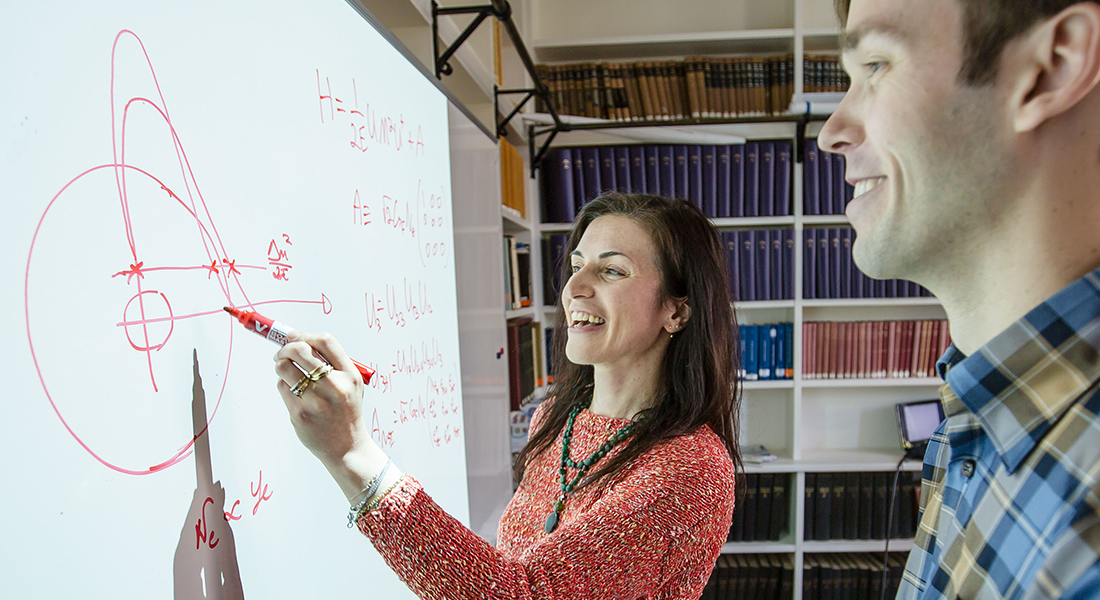Irene Tamborra receives grant to investigate the unknowns of neutron star mergers
Villum Young Investigator Plus is an extension of the Villum Young Investigator grant Irene Tamborra received 5 years ago. The researchers receiving the Plus grant are selected among the most talented Villum Young Investigator grantees. The grant lasts 3 years and covers the salaries of a PhD student and a postdoc. In spite of its name, Villum Young Investigator Plus is not a continuation of the former grant. It covers new ground, so to speak, and will allow Irene and her colleagues to venture into a new project

From where does the gold in the ring on your finger come from?
The title is a little unusual for a scientific project: “Neutron stars rattling, shining, and sparkling”. Even though this title may set a playful tone for the project, the idea is to take a closer look at one of the hottest topics in astrophysics today, namely the sites where the elements heavier than iron are synthesized. It is still a bit of a mystery where elements like platinum and gold actually come from, and there is a lot of scientific activity going on in this direction. Since long time, neutron star mergers have been proposed as one of the candidate sources where the heavy elements could originate. This hypothesis has partially been supported with evidence in 2017, when gravitational waves and electromagnetic radiation were detected from the extremely violent coalescence of two neutron stars occurring in deep space. This event also forms the basis for this new project, and the current prediction is that there are many more of these kinds of events to investigate.
Neutrinos play a particularly interesting role for Irene Tamborra
Irene Tamborra’s group focuses on unraveling the mysteries of our universe through neutrinos. But the so-called “ghost particle of the universe”, the neutrino, has very peculiar properties, which may or may not have a bearing in this project. Neutrinos travel across their sources and through space with very little interactions (thereby the name) and, as such, have the potential of being “messengers” of events from far, far away in space. Hence, we need to learn more about their physics and perhaps how to “read” the message they carry. One of the goals of this project is to figure out their role in the synthesis of the heavy elements and, on a more general level, understand the complicated physics going on in neutron star mergers and the electromagnetic event generated afterwards. This is called short gamma ray burst and is a very bright, short lived event, whose physics is still poorly understood.
The way forward from from Villum Young Investigator Plus
So what will happen further on in this field of research, if the role of neutrinos is better understood? Irene Tamborra puts it this way: “If we manage to assess the importance of neutrinos in compact binary mergers and in the synthesis of the heavy elements, the way ahead would be to either incorporate the physics connected to neutrinos into the very complex simulations used to reproduce these violent cosmic collisions on our computers, or discard neutrino physics, if it turns out to be insignificant. It is a bit like a crime story. We are in the detective’s role, trying to find out who/what to focus on in order to find the real culprit and what are the secret messages carried by the ghostly particles.
Topics
See also:
Contact
Irene Tamborra, Associate Professor
Email: tamborra@nbi.ku.dk
Phone: +45 35 33 32 27
